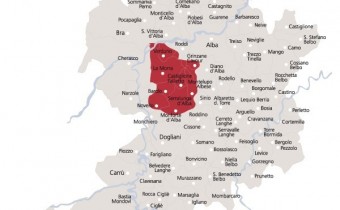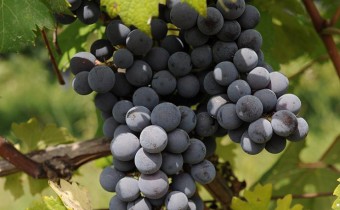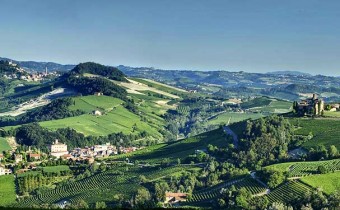The history of the Barolo dates back to circa 2500 years ago, with the men and women of Ligui Stazieli, who built the first rudimentary grape-growing structures. Later on in its history, the first admirers of its nectar were the Gauls, whose conquest of the territories beyond the Alps was motivated in part by their fondness for the wine produced here.
Subsequently, the Langhe region caught the ambitious eye of the Romans. They were so impressed by the quality of the wine produced in the area of Alba (known as Alba Pompeia back then) that Julius Caesar, when he was returning from the Gallic Wars, wanted to bring a good amount of it to Rome.
In order to find the first mention of the Nebbiolo grape, we must wait until the Middle Ages: in some documents from 1268, written and stored in the castle of Rivoli, there are mentions of the “Nibiol”. The cultivation of this grape and the wine it produced had an exponential development during the Renaissance period.
The definitive fame came when, in 1751, a group of diplomats from Piemonte sent to London a batch of “Barol“. It was such a great success, even the future US president Thomas Jefferson, who was travelling around Europe at that time, mentioned the superb qualities of the wine in his diary, describing it as “almost as gentle as the Bordeaux, and as lively as Champagne.” We have a very defined description of what the Barolo of those years tasted like: a sweet sparkling wine, consequence of different wine-making processes the producers used since they still didn’t know how to turn all the sugars from the must into alcohol.
The modern Barolo is considered to be born around 1830, and the credit is due to the Marquis Falletti, the French oenologist Louis Oudart and Count Camillo Benso di Cavour.
With the blessing of Napoleon, Marquis Carlo Tancredi Falletti married Juliette (or Giulia) Colbert de Maulevrier, a French noblewoman and the great granddaughter of the famous Minister of Finance of King Louis of France.
The Fallettis were a family of bankers who acquired a vast amount of land and properties all over Alba since 1250. Giulia was the host of one of the leading intellectual circles of Turin, as well as patron of Silvio Pellico.
After the death of Carlo in 1838, Giulia acquired all the property of the Falletti family. She invited the great oenologist Louis Oudart to her estates, where he applied the techniques used in the production of the great French wines to the one made in the lands of the Marchise.
Thus he wrote one of the most important pages in the history of modern Barolo, which became so popular its name reached King Carlo Alberto of Savoy ears.
By royal request, originated in the curiosity for a wine that was starting to be talked about in courts all over Europe, Giulia sent 325 wagons to the King. Each wagon contained a barrel of Barolo wine, one for each day of the year (save for the 40 days of Lent), so that the King and his court could delight in the Marquise’s wine every day. And that is how in the Court of Torino the Barolo was known as “wine of Kings, King of wines“.
It did not take long before Carlo Alberto of Savoy took an interest in the wines produced in the region of the Barolo. And so he bought the property of Verduno and Pollenzo; and entrusted the care of the vineyards to General Staglieno, an oenologist who admired the French style.
The morganatic son of Vittorio Emanuele II and Rosa Vercellana, Emanuele, Count of Mirafiori, was assigned the lands of Fontanafredda in Serralunga d’Alba and the La Volta castle in Barolo with all its surrounding farms.
Another protagonist was Camillo Benso, Count of Cavour. He had travelled across the Alps many times, and was imbued with French culture. When he was around 20 years old, he became Mayor of Grinzane. Then he asked Luois Oudart to take care of the wine from the family properties in the area. We can say it was thanks to the collaboration between Cavour and Oudart that the modern style of the Barolo was born. 1844 was the year when the Barolo as a dry, firm wine was put into bottles.
During the years following the death of the Marquise Falletti -between the XIX and XX centuries-, the vineyards were gradually sold to other farms; and the fragmentation of ownership still characterizes the Langhe area, in a way that resembles Burgundy.
Since the beginning of the XX century, the Barolo had become so popular that the need to protect it against counterfeit and safeguard its good name arose.
During the First World War, the phylloxera epidemic took a hard toll on the vineyards, but the Barolo did not die. On the contrary, in 1909 the Agricultural Consortium defined the boundaries for the production of this great wine, in order to encourage and protect its culture. It was the start of a business. The inter-war period presented a structural boom , even when the policy of that time was investing in quantity rather than quality of the production.
In 1927, the «Decreto sui vini tipici», a decree that officially circumscribes the Barolo region, was published in the Gazzetta Ufficiale. On that same year, its geological zones were defined as well: a zone of Tortonian origin, with the marls of Sant’Agata (more fruity, elegant, precocious wines), where La Morra, Verduno and a small part of Castiglione Falleto are located; and the zone of Helvetian origin with grey sandstones and strata of sand (more structured, stronger, long-aging wines), where Castiglione Falletto, part of Monforte, Grinzane and part of Barolo can be found.
The Barolo had already become one of the greatest wines in the world by then.



